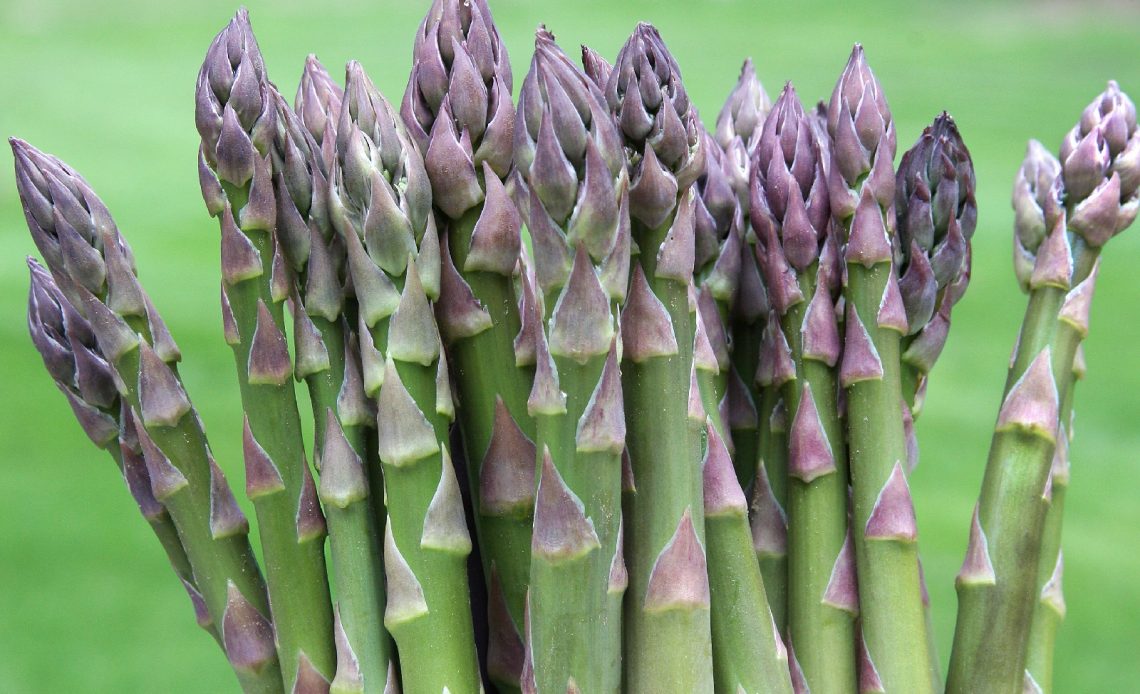

We’re here to help! Wild Yards is a completely free website that is 100% dedicated to helping you create a wildlife-friendly, sustainable yard. Read more
WildYards is reader-supported. When you buy a product through a link on our site, we may earn a comission. Every product is independently selected by our (obsessive) editors and our reviews are unbiased and objective. Read more about our mission or our privacy policy.
If you love having fresh vegetables, but you don’t enjoy gardening, perennial plants like asparagus can help spare you some back-breaking labor. Asparagus plants are self-seeding, so they come back year after year. Aside from annual fertilizing to restore lost nutrients, that means less work for you overall. You can further improve your plant’s performance by making the most of asparagus companion plants.
Asparagus companion plants like dill, basil, and cilantro, help deter harmful insects from feeding on your vegetables. Other companions, such as petunias, strawberries, and spinach, help improve growing conditions to give you the best asparagus crop possible.
Why should you consider companion planting with your asparagus?
Growing asparagus isn’t particularly laborious, but it does take patience and dedication. Asparagus is slow-growing. The seeds can take up to three years to germinate, and, in the meantime, they need the soil surrounding them to stay moist and protected from the sun’s harsh rays. Certain companion plants act as a living mulch to keep the soil primed for growing asparagus plants.
Additionally, because asparagus takes so long to sprout, it can be difficult to remember where you planted them. Companion planting helps you delineate your garden space so you remember what’s what when leaves start sprouting. Otherwise, you might accidentally uproot your seedlings.
Like other vegetables, asparagus is vulnerable to certain insects. Caterpillars, armyworms, stink bugs, and asparagus beetles are just a few insects that like to strip asparagus plants of their leaves. Companion plants can help repel these pests, keeping them out of your garden and away from your valuable crops.
What are the best asparagus companion plants to grow?
Asparagus grows best right in the ground but can do just as well in raised beds, as long as there’s enough depth for their root systems to grow. For best results, look for companion plants that enjoy sandy, well-drained soil and full sun. These are the same growing requirements that asparagus plants need to thrive.
You should also take care to keep your companion plants far enough away from your asparagus seedlings. Asparagus can grow to impressive heights of five feet. They need plenty of room to grow. So allow for enough space between rows to prevent competition. Other companion plants can be grown as a cover crop to help retain moisture and prevent soil erosion as your asparagus plants emerge.
Rhubarb
Another perennial, rhubarb is a popular asparagus companion plant for low-maintenance gardens. Like asparagus, rhubarb plants don’t like to have their soil disturbed too much. So aside from regular top-dressing and weeding, they don’t require much work.
Rhubarb leaves are high in oxalic acid, making them unsafe for animal and human consumption. These same acids prove toxic to many garden pests as well, including aphids, thrips, whiteflies, and caterpillars, making rhubarb an excellent natural pest control. Plant rows of asparagus between rows of rhubarb to prevent them from competing for space and nutrients.
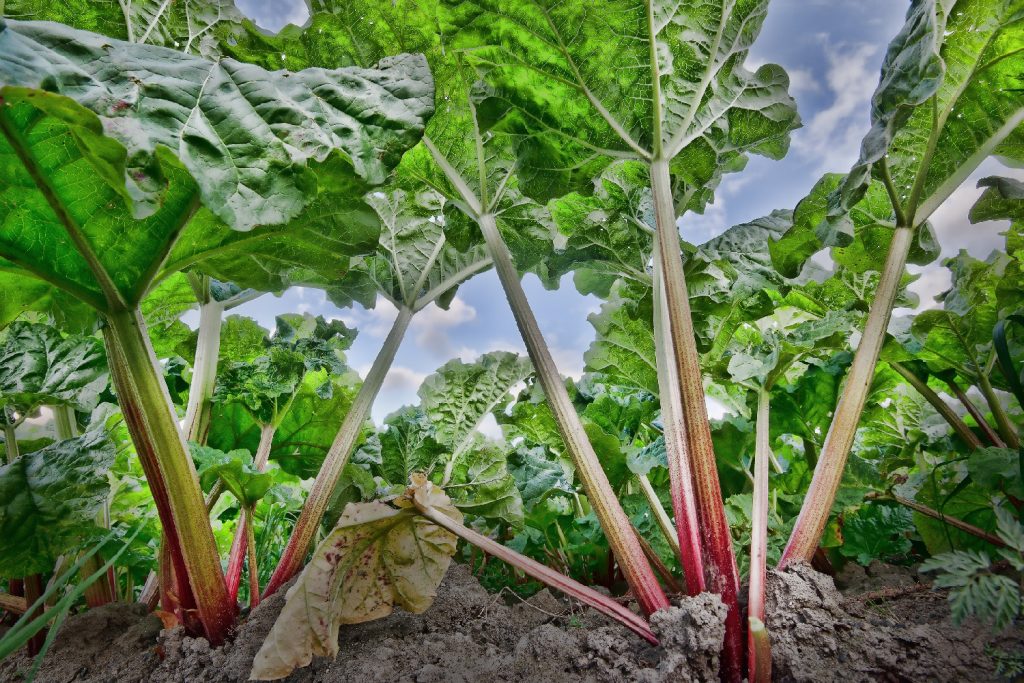
Spinach
These dark leafy greens are wonderful asparagus companion plants because their shallow roots never interfere with the asparagus plant’s deep ones. Additionally, because spinach grows so quickly, its nutrient intake is limited. From the time the seeds sprout right up until harvest, they never leech enough minerals from the soil to do asparagus any damage.
Spinach plants produce broad leaves that cast a shadow on the surrounding soil, keeping it cool and moist. Spinach grows very well in between rows where it can even be grown as a trap crop to draw aphids, beetles, and caterpillars away from your asparagus plants.
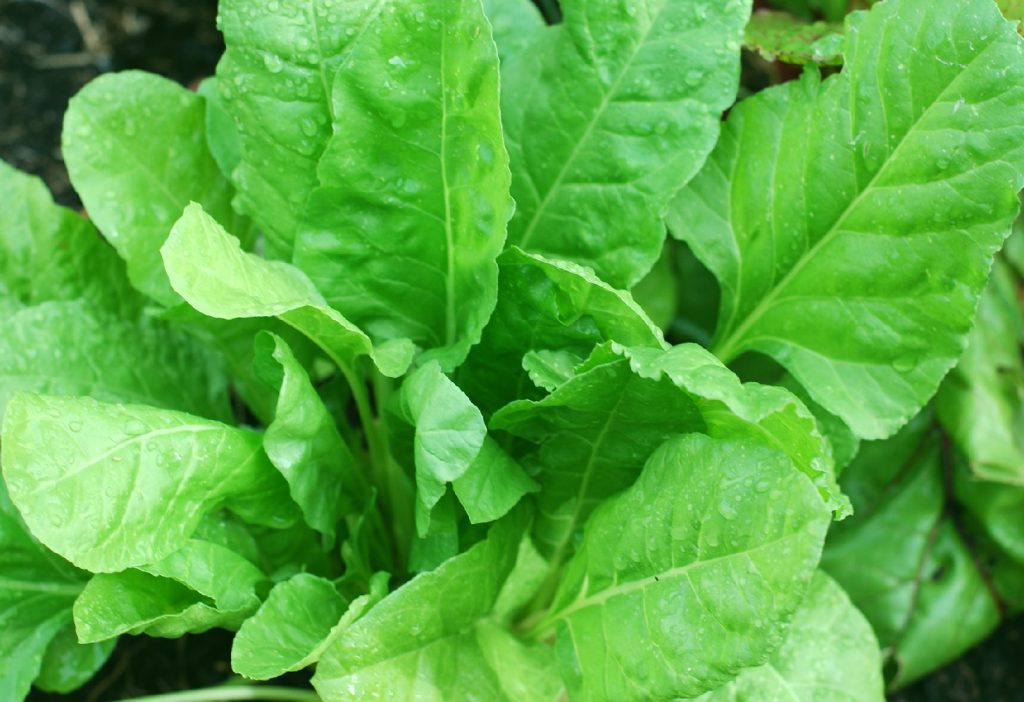
Nasturtiums
Speaking of trap crops, nasturtiums are frequently utilized as companion plants for that very reason. Nasturtiums attract all manner of hungry vegetable-eating bugs. Aphids, spider mites, leafhoppers, and cabbage moths will pick nasturtiums over other plants. Many gardeners grow nasturtiums in between rows to keep these annoying pests off their more valuable plants.
These flowering annuals support your garden’s ecosystem. Nasturtium’s pretty blossoms attract pollinators, especially hummingbirds and butterflies. And their large, cascading leaves cover the ground around them to help the soil retain moisture. Keep them near your asparagus plants to improve soil conditions and repel pests.
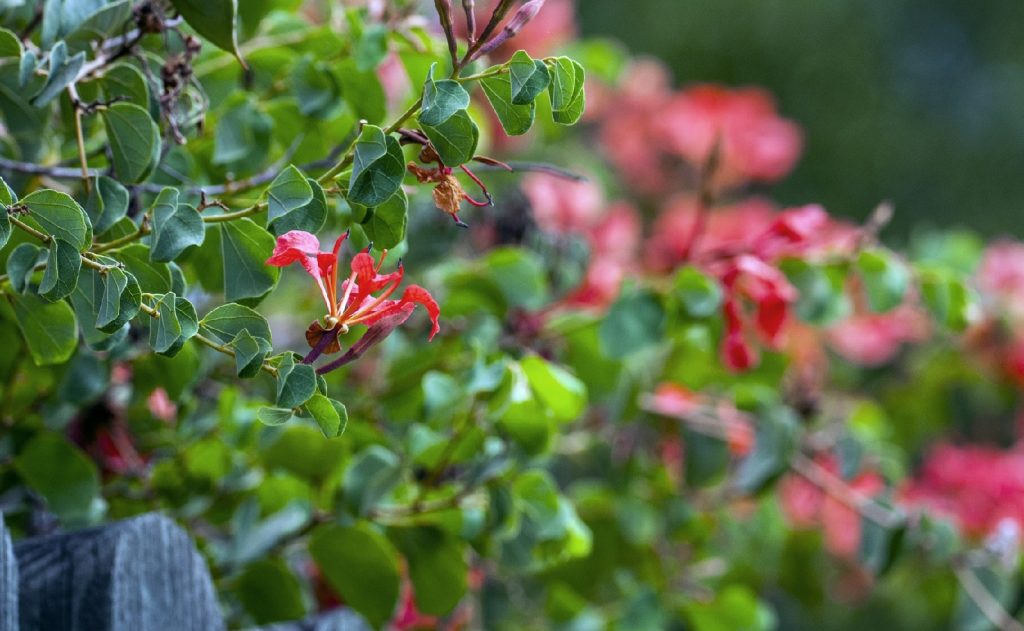
Dill
This herb’s delicate, frond-like leaves grow fairly close to the ground, protecting it from moisture loss. This is why dill works well as a companion plant for many vegetables, including asparagus. Plus, because its roots are so shallow, it doesn’t compete with neighboring plants for nutrition.
Dill attracts ladybugs, hoverflies, parasitic wasps, and other insects that prey on vegetable-eating bugs. This plant is frequently used as a spice in canning, especially to make cucumber pickles. But you can also include it in pickled asparagus recipes to give them a sour yet savory flavor.
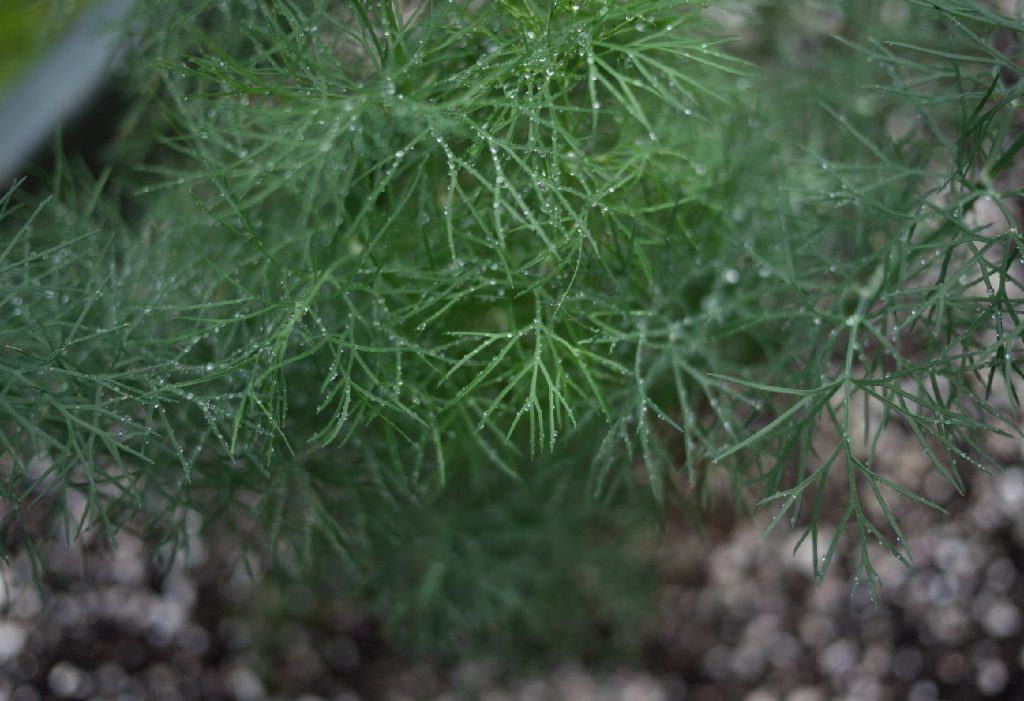
Grapes
Grapes love the same sandy, nutrient-deficient soils that asparagus plants need to grow. Consequently, grapes have been used as asparagus companion plants for decades. But because they both require a lot of room, it takes some ingenuity to keep them in the same garden.
As vining plants, grapes must be trained to grow up a trellis so they don’t interfere with other plants. They’re best grown on the sunniest edge of your garden with asparagus planted in a row on the opposite side. This way, the grapes can keep the asparagus plants in the shade during sunny afternoons.
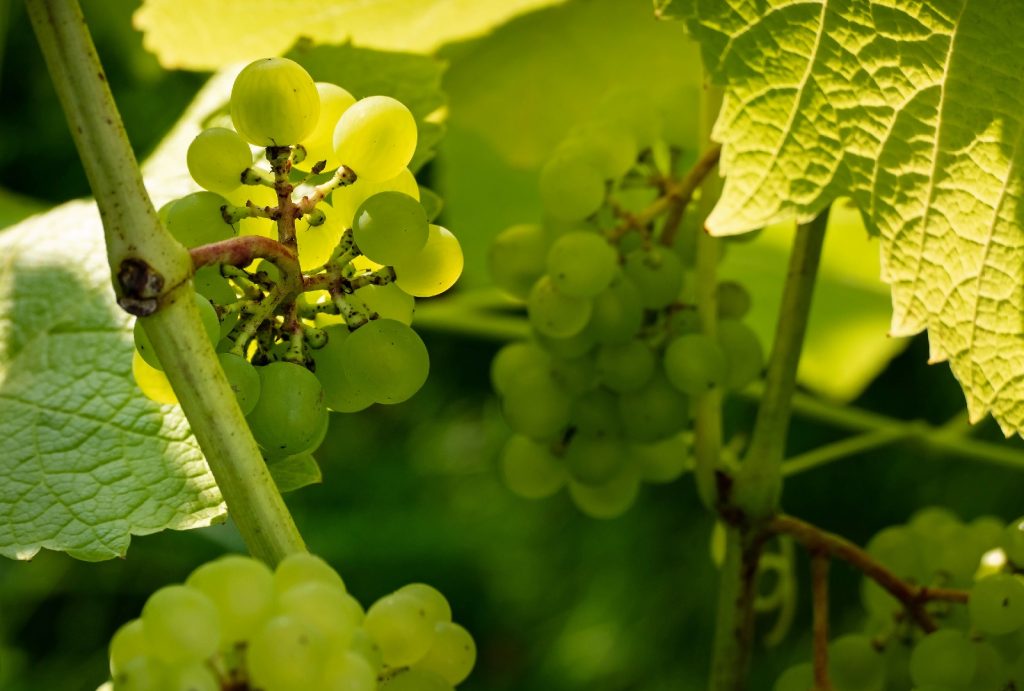
Basil
This strong-smelling flowering herb is one of the best plants for repelling asparagus beetles. Basil is fast-growing and doesn’t require much maintenance, aside from regular watering and weeding. Because it’s such an easy keeper, it makes a great asparagus companion plant even before asparagus seeds germinate, as basil can help you remember where you planted your asparagus seeds.
Basil produces small white flowers that bees, beetles, and other insects love to visit. Once in your garden, they’ll help pollinate your vegetable crops and keep pest populations down. In a short while, this improves the health of your entire garden, asparagus included.
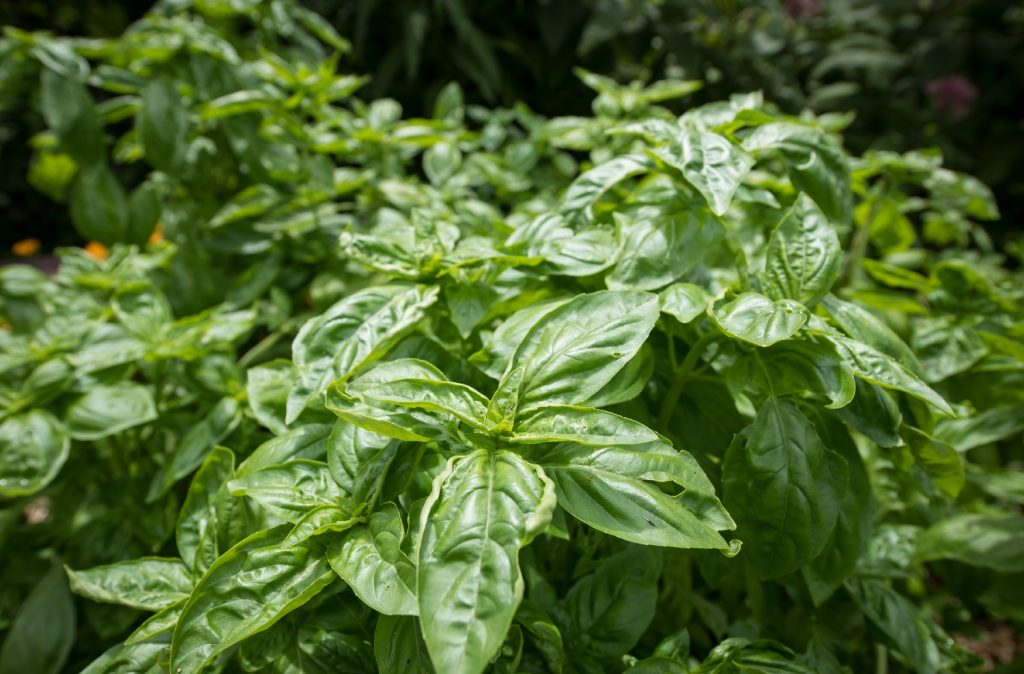
Strawberries
Perhaps the best asparagus companion plant out there, strawberry bushes fill in the spaces around asparagus stalks to keep moisture in the soil and prevent erosion. Like asparagus, strawberry plants come back every year, so once these plants get started, they’re easy to maintain.
It’s worth noting that strawberries have fairly deep root systems. Plant your asparagus seeds six to eight inches deep in the soil so they have plenty of space beneath the neighboring strawberry bushes to develop their roots. This will prevent the two plants from competing for nutrients while still allowing them to benefit from a symbiotic relationship.
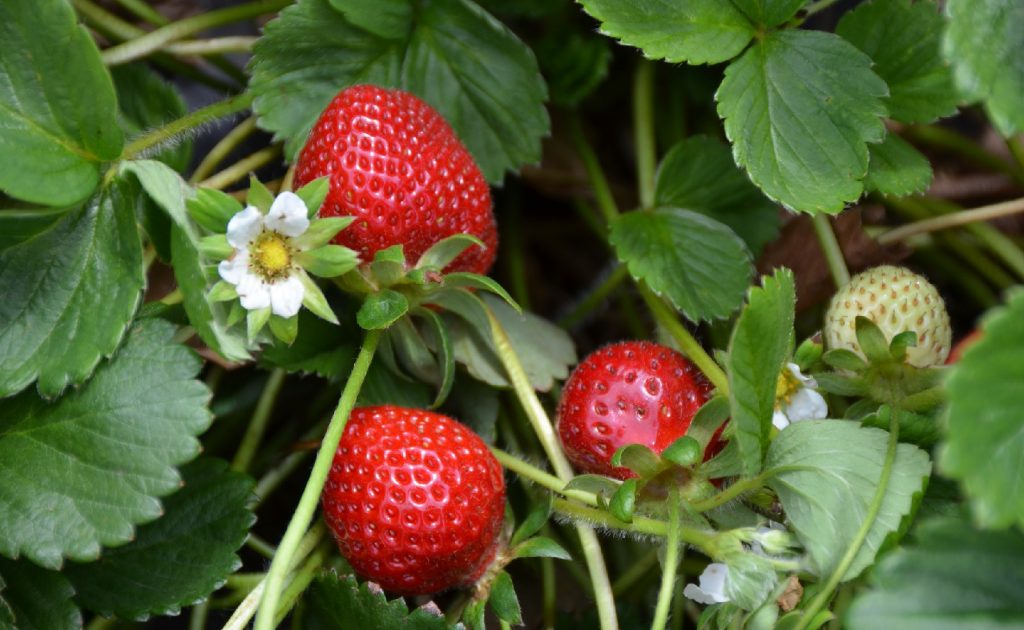
Marigolds
Not many people eat marigolds (although it is perfectly safe to do so), but because they’re so good at repelling bad bugs and attracting good ones, they’re a popular companion plant. Marigolds produce a strong odor that’s… well, less than pleasant. Worms, whiteflies, and nematodes in particular avoid marigolds. Growing them by your asparagus can help spare them from hungry insects.
Marigolds are also unpopular with deer and rabbits. Because these flowers are so ruffled and because the foliage is so stiff, foraging mammals prefer not to eat them. Keeping them around your asparagus plants will help persuade these animals to look elsewhere for a meal.
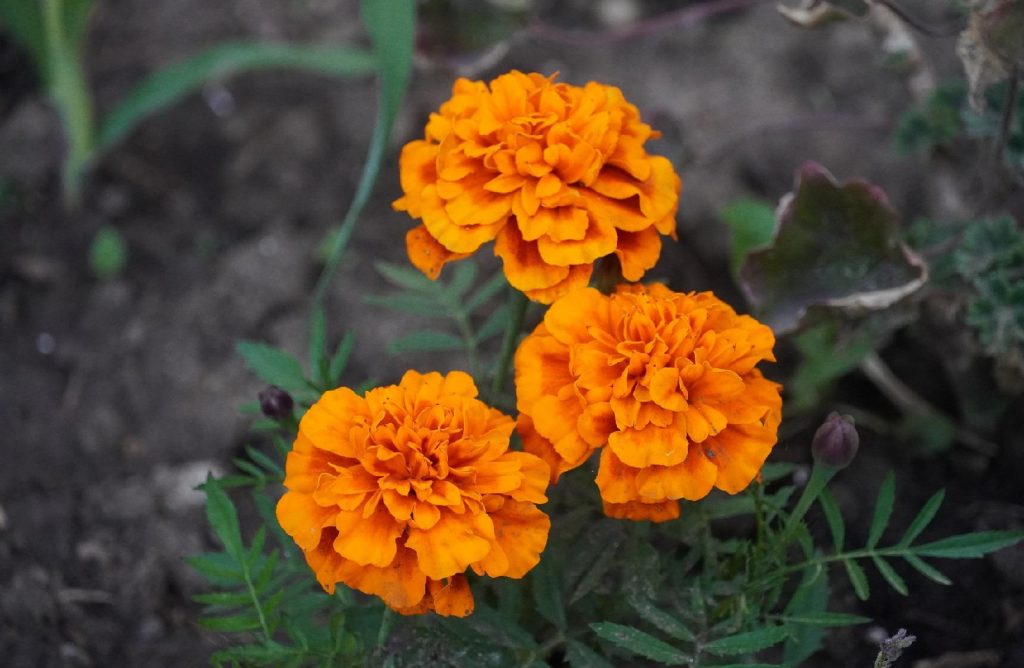
Tomatoes
Tomato plants are a hit with novice gardeners and seasoned planters alike. These veggies like to grow in acidic, sandy, well-drained soil, just like asparagus. And their relatively shallow roots mean these heavy nutrient users never compete with asparagus for minerals.
A major benefit to using tomatoes as an asparagus companion plant is that these nightshades produce saponins, which act as a natural repellent for many insects, including asparagus beetles. For best results, alternate rows of asparagus with rows of tomato plants, or grow them together in the same row — just be sure to space them far enough apart so they each have enough room.
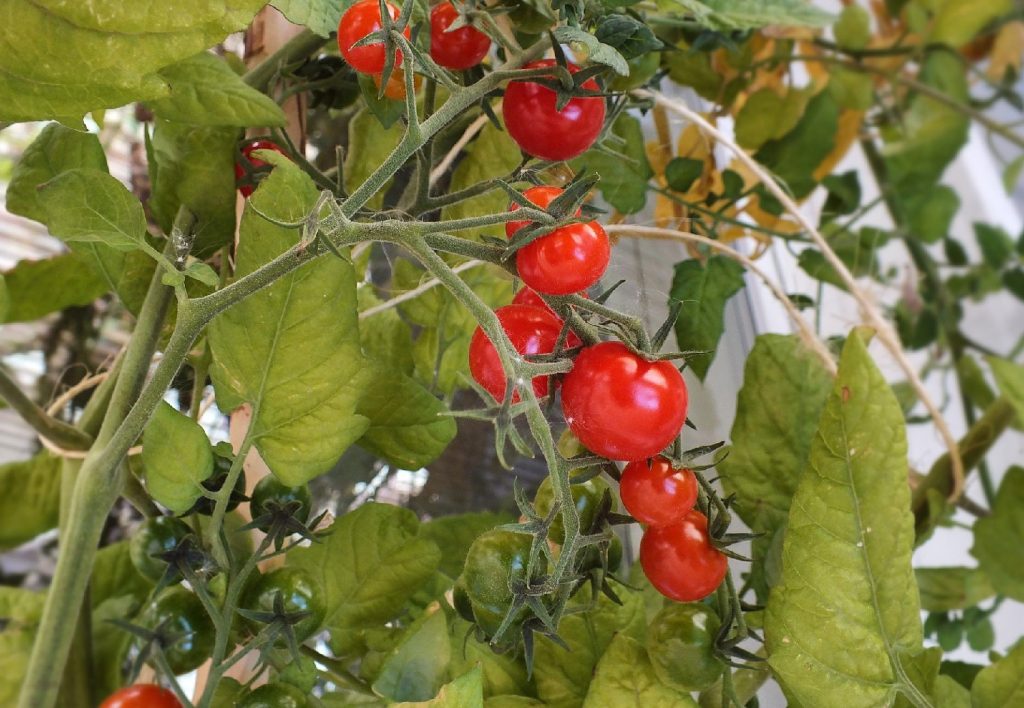
Petunias
Easy-growing petunias can help your garden in several ways. First, they attract important pollinators. Petunia’s vibrant, nectar-rich flowers are popular with hummingbirds, butterflies, and bees, who will visit your flowering vegetable plants once they’ve filled up on these ornamentals.
Next, petunias repel aphids, caterpillars, and beetles, keeping them off of the asparagus plants that you’ve been waiting years to see sprout. Lastly, these lovely flowers produce long, cascading branches that drape out over the ground around them to lock in moisture and keep soil temperatures down. Your asparagus will love being planted with petunias, and so will the other plants in your garden.
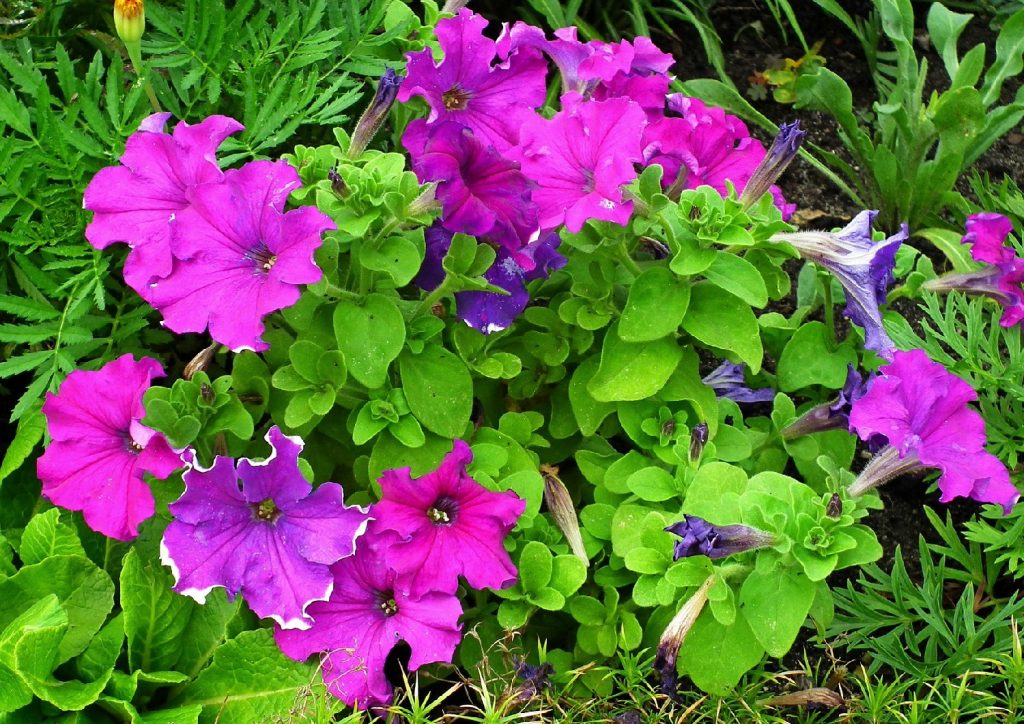
Cilantro
This herb produces a strong, distinctive scent that most insects hate. Growing cilantro near your asparagus plants helps keep those pests away so you don’t have to spend time plucking them off one by one. Their bitter taste also keeps hungry rabbits and deer from nibbling on your vegetable plants.
Cilantro has a shallow root system that helps the soil hold onto moisture without stealing valuable nutrients away from asparagus plants. Their delicate leaves grow in bunches up to two feet tall. Because cilantro plants are so small relative to asparagus, they can safely grow around the base of asparagus plants without competing with them or inhibiting growth.
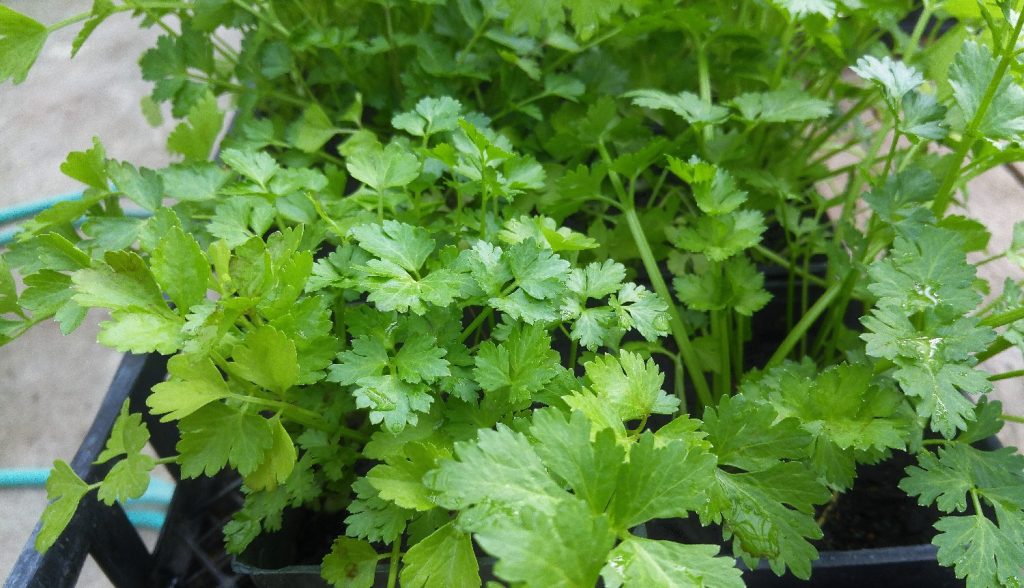
Zinnias
With their bold colors and large flower heads, zinnias attract all manner of beneficial insects to your garden. If your asparagus plants regularly fall prey to beetles, worms, and caterpillars, keeping zinnias near them can help.
Zinnias produce enough nectar to feed a variety of pollinators and bug-eating insects. Once they get a taste, they’ll keep coming back for more. Zinnias attract ladybugs, praying mantises, hoverflies, and parasitic wasps who will prey on the mites, aphids, and other bugs that are destroying your asparagus plants.
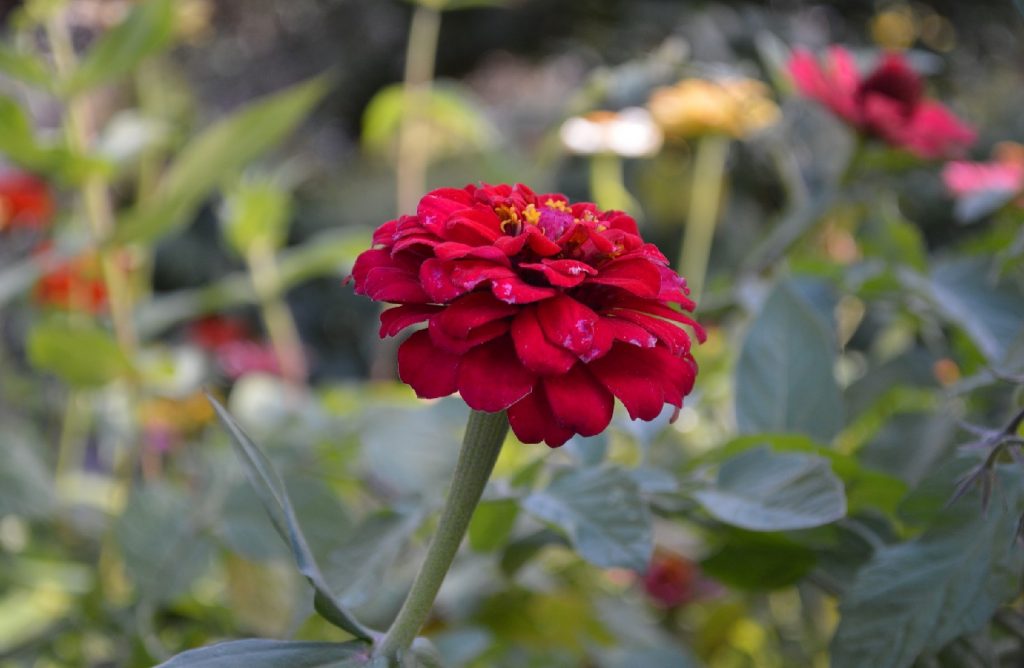
What are the worst plants to grow with asparagus?
Certain plants may compete with your asparagus for nutrients. This can severely impact performance and crop yield. Other plants may attract asparagus beetles and similar asparagus-eating insects. For these reasons, it’s best to avoid using the following as asparagus companion plants.
Onions
While it’s true that onions are excellent for repelling insects, deer, and rabbits thanks to their strong smell, these root vegetables require a lot of nutrients to grow. Planting them near your asparagus will restrict both plants. Growing onions as asparagus companion plants will result in small produce — that is, if they don’t choke each other out altogether.
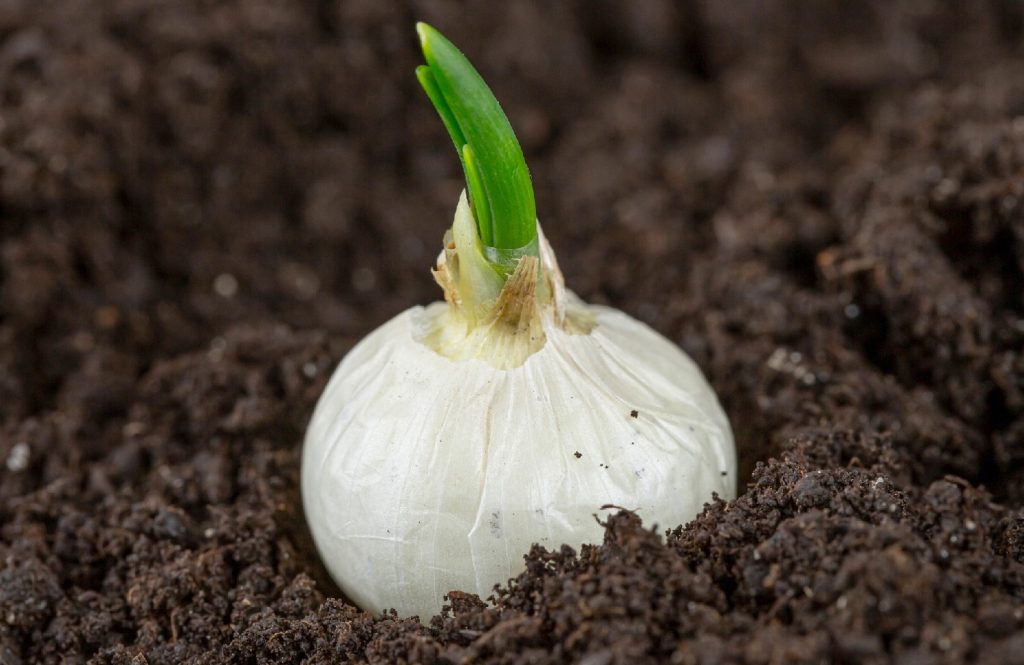
Garlic
Another stinky vegetable, garlic can help ward off damaging garden insects, including aphids, mites, and caterpillars. But because these plants grow fairly deep in the soil, they’re a threat to the asparagus plant’s nutrient levels.
Of course, if bugs are eating your asparagus plants, garlic can still help. Mix one part vinegar with one part water, and add five to ten drops of garlic oil. Spray this solution onto your asparagus plants to discourage insects from feeding on them.
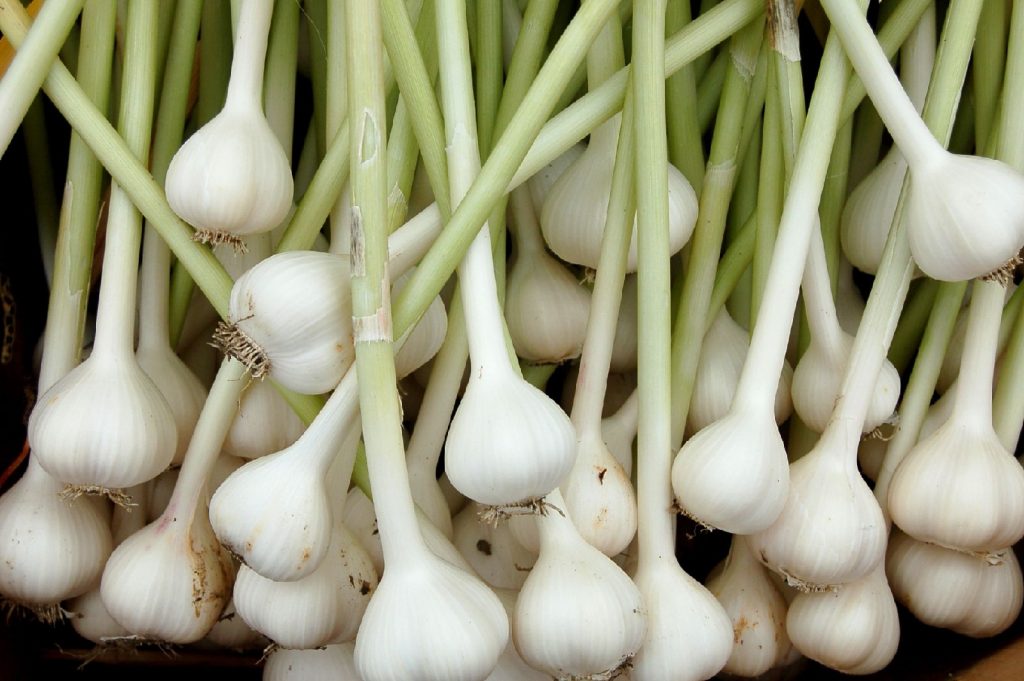
Potatoes
Unfortunately, potatoes also make poor asparagus companion plants because they require so much nutrition. These root veggies take all of the minerals from the soil so your asparagus plants won’t stand a chance. If you want to grow potatoes and asparagus, grow them in separate beds.
Carrots
As long root vegetables, carrots reach deep into the soil, where they soak up all of the minerals they can. Because they’re such heavy nutrient users, they can quickly steal away the minerals your asparagus plants need to grow. Additionally, carrots can attract carrot flies that will eat asparagus plants if given the chance.
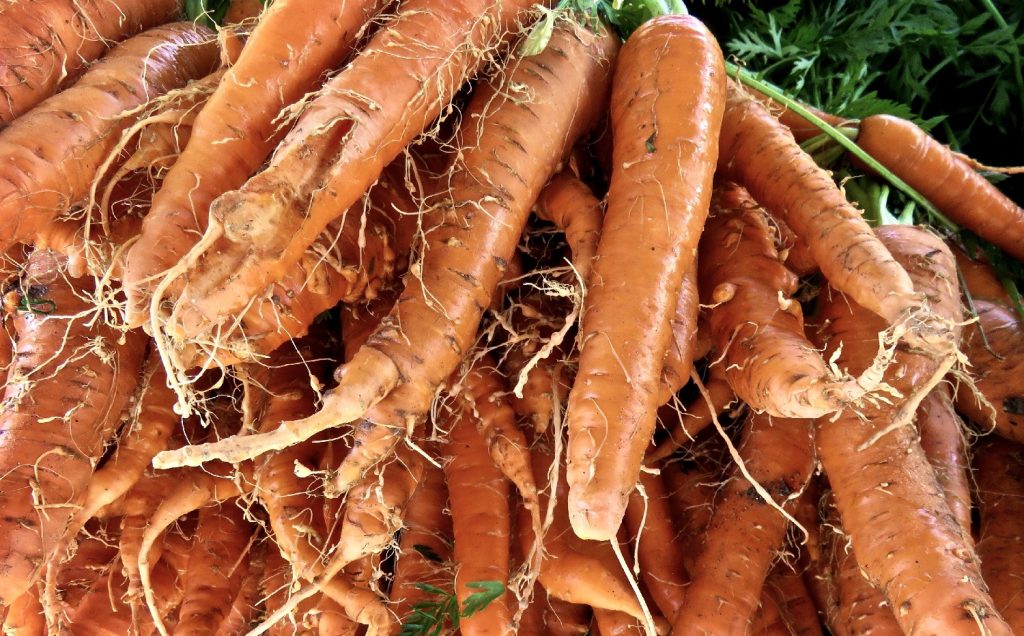
Leeks
These strong-smelling plants may help ward off insects, but because they use up a lot of nutrition, they don’t make great asparagus companion plants. If you’re careful to amend your soil appropriately, growing leeks as a border around the perimeter of your garden can help keep pests away from your vegetables. But take care not to place them too near your asparagus plants, which will suffer from mineral loss if leeks are too close.
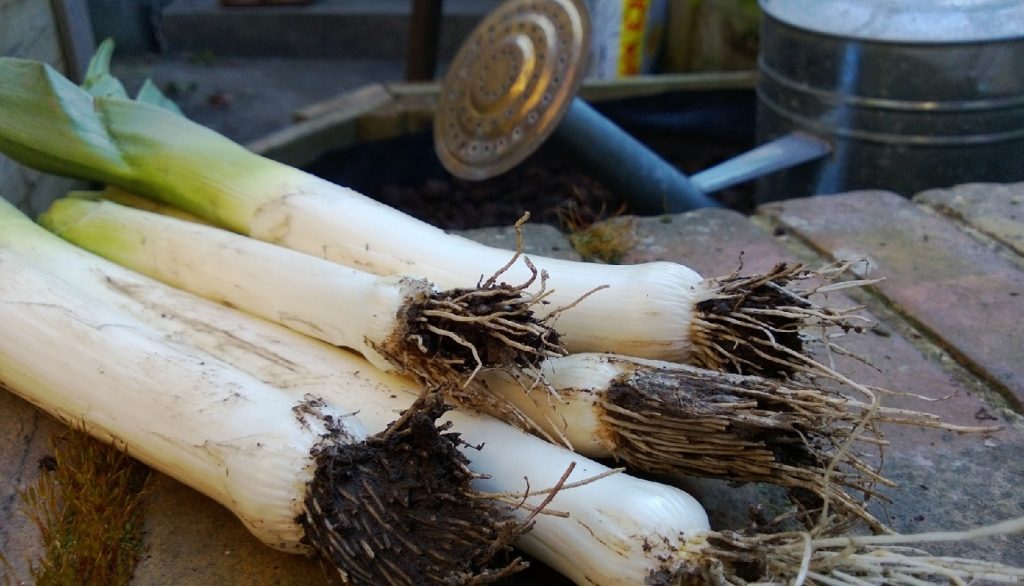
Is companion planting for asparagus worth it?
By keeping the right plants near them, and by keeping the wrong plants far away from them, you can help your asparagus get a head start. When you arm these vegetables with everything they need to thrive, you can ensure you’ll be serving delicious homegrown asparagus at your dinner table for years to come.
